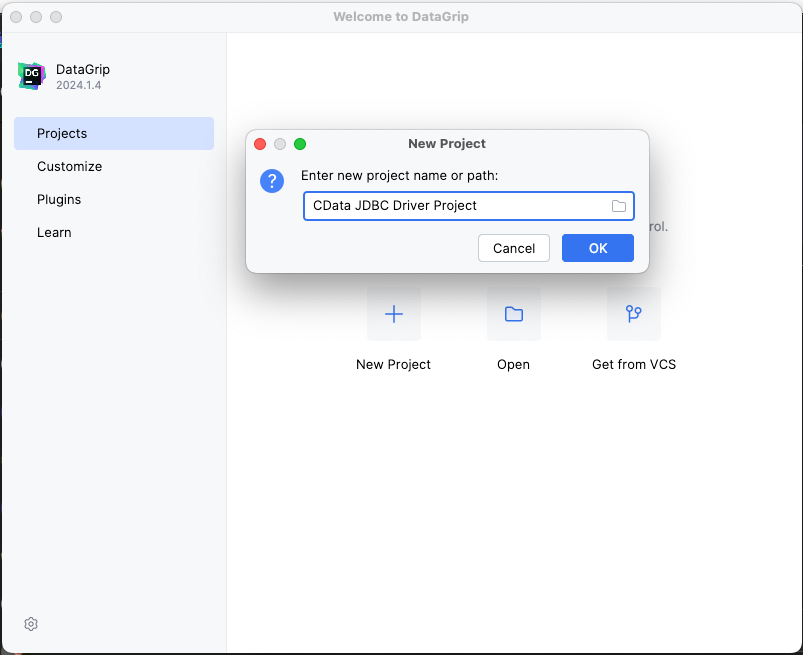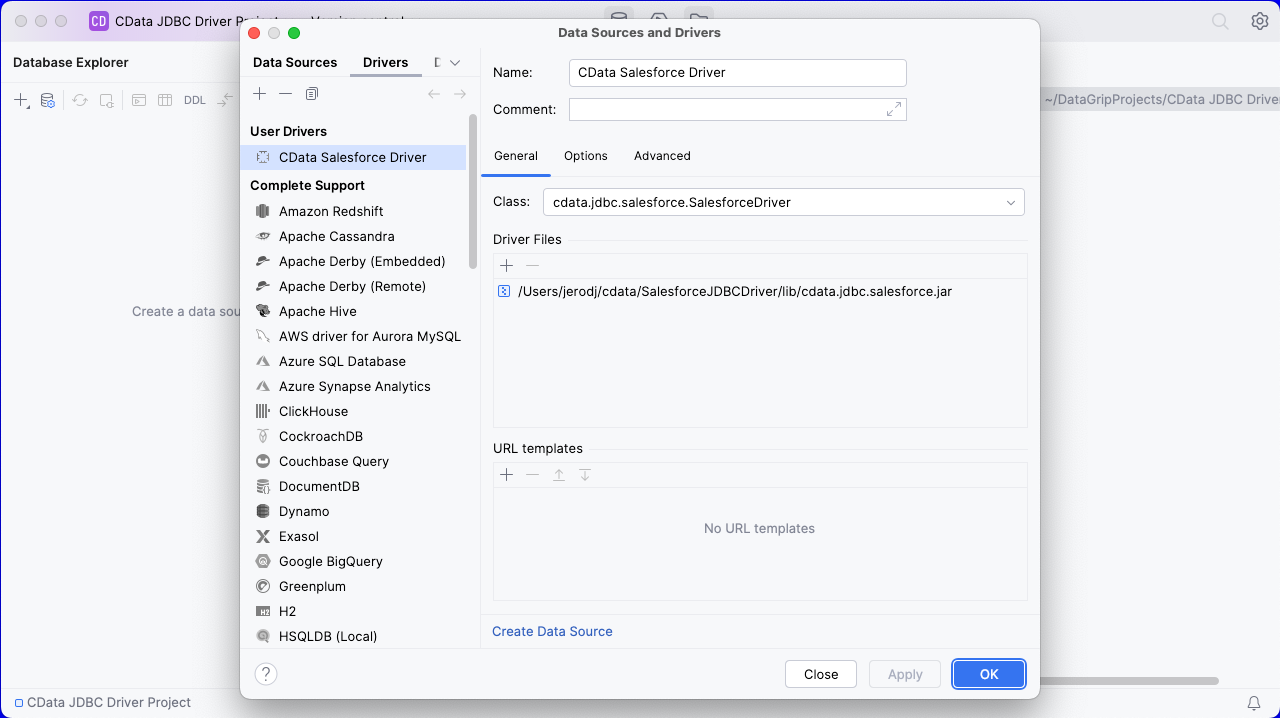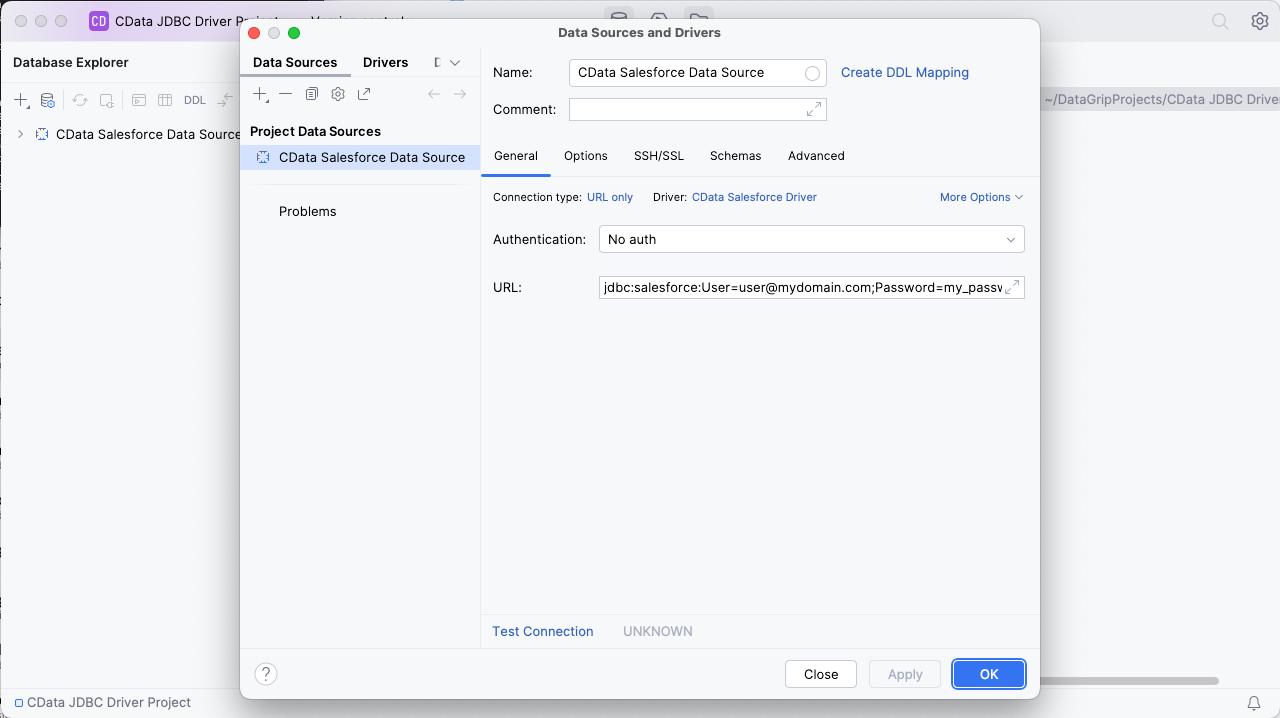Discover how a bimodal integration strategy can address the major data management challenges facing your organization today.
Get the Report →Query Bullhorn CRM Data in DataGrip
Create a Data Source for Bullhorn CRM in DataGrip and use SQL to query live Bullhorn CRM data.
DataGrip is a database IDE that allows SQL developers to query, create, and manage databases. When paired with the CData JDBC Driver for Bullhorn CRM, DataGrip can work with live Bullhorn CRM data. This article shows how to establish a connection to Bullhorn CRM data in DataGrip and use the table editor to load Bullhorn CRM data.
Create a New Driver Definition for Bullhorn CRM
The steps below describe how to create a new Data Source in DataGrip for Bullhorn CRM.
- In DataGrip, click File -> New > Project and name the project
![Creating a new DataGrip project.]()
- In the Database Explorer, click the plus icon () and select Driver.
![Adding a new Driver.]()
- In the Driver tab:
- Set Name to a user-friendly name (e.g. "CData Bullhorn CRM Driver")
- Set Driver Files to the appropriate JAR file. To add the file, click the plus (), select "Add Files," navigate to the "lib" folder in the driver's installation directory and select the JAR file (e.g. cdata.jdbc.bullhorncrm.jar).
- Set Class to cdata.jdbc.bullhorncrm.BullhornCRM.jar
Additionally, in the advanced tab you can change driver properties and some other settings like VM Options, VM environment, VM home path, DBMS, etc - For most cases, change the DBMS type to "Unknown" in Expert options to avoid native SQL Server queries (Transact-SQL), which might result in an invalid function error
- Click "Apply" then "OK" to save the Connection
![A configured Driver (Salesforce is shown).]()
Configure a Connection to Bullhorn CRM
- Once the connection is saved, click the plus (), then "Data Source" then "CData Bullhorn CRM Driver" to create a new Bullhorn CRM Data Source.
- In the new window, configure the connection to Bullhorn CRM with a JDBC URL.
Built-in Connection String Designer
For assistance in constructing the JDBC URL, use the connection string designer built into the Bullhorn CRM JDBC Driver. Either double-click the JAR file or execute the jar file from the command-line.
java -jar cdata.jdbc.bullhorncrm.jarFill in the connection properties and copy the connection string to the clipboard.
Begin by providing your Bullhorn CRM account credentials in the following:
- DataCenterCode: Set this to the data center code which responds to your data center. Refer to the list of data-center-specific Bullhorn API URLs: https://bullhorn.github.io/Data-Center-URLs/
If you are uncertain about your data center code, codes like CLS2, CLS21, etc. are cluster IDs that are contained in a user's browser URL (address bar) once they are logged in.
Example: https://cls21.bullhornstaffing.com/BullhornSTAFFING/MainFrame.jsp?#no-ba... indicates that the logged in user is on CLS21.
Authenticating with OAuth
Bullhorn CRM uses the OAuth 2.0 authentication standard. To authenticate using OAuth, create and configure a custom OAuth app. See the Help documentation for more information.
![Using the built-in connection string designer to generate a JDBC URL (Salesforce is shown.)]()
- Set URL to the connection string, e.g.,
jdbc:bullhorncrm:DataCenterCode=CLS33;OAuthClientId=myoauthclientid;OAuthClientSecret=myoauthclientsecret;InitiateOAuth=GETANDREFRESH - Click "Apply" and "OK" to save the connection string
![A configured Data Source (Salesforce is shown).]()
At this point, you will see the data source in the Data Explorer.
Execute SQL Queries Against Bullhorn CRM
To browse through the Bullhorn CRM entities (available as tables) accessible through the JDBC Driver, expand the Data Source.
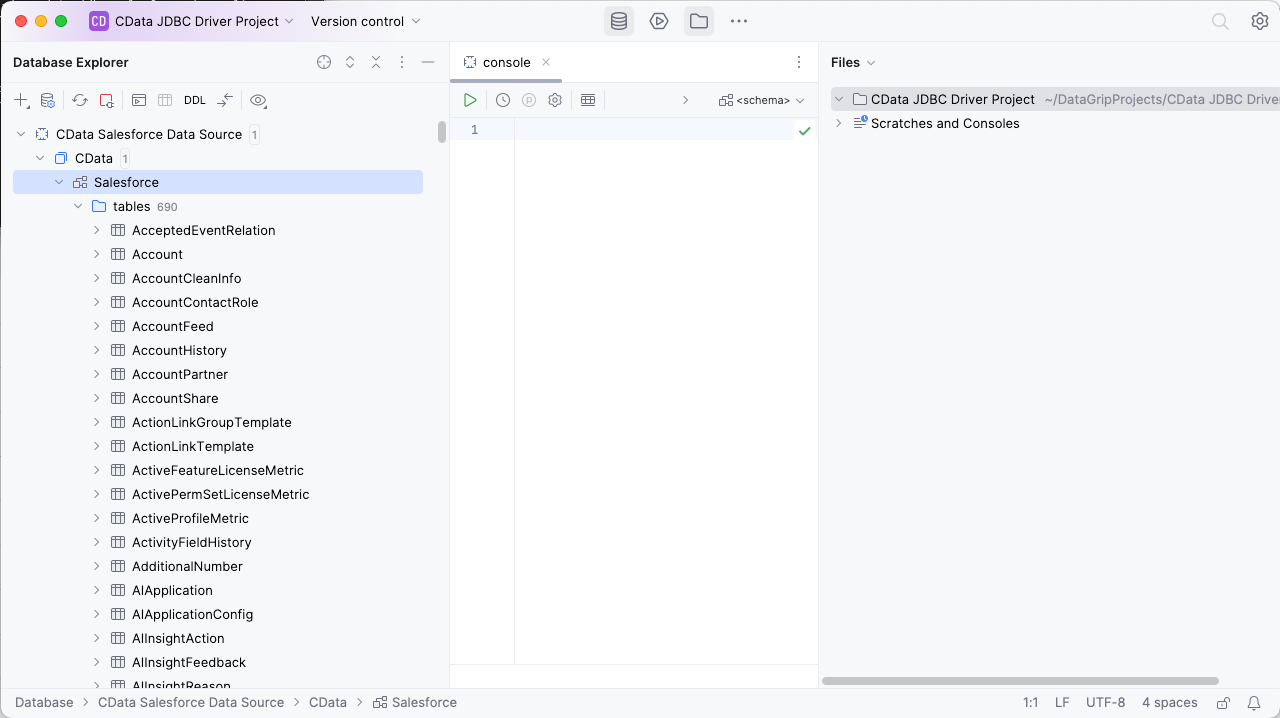
To execute queries, right click on any table and select "New" -> "Query Console."
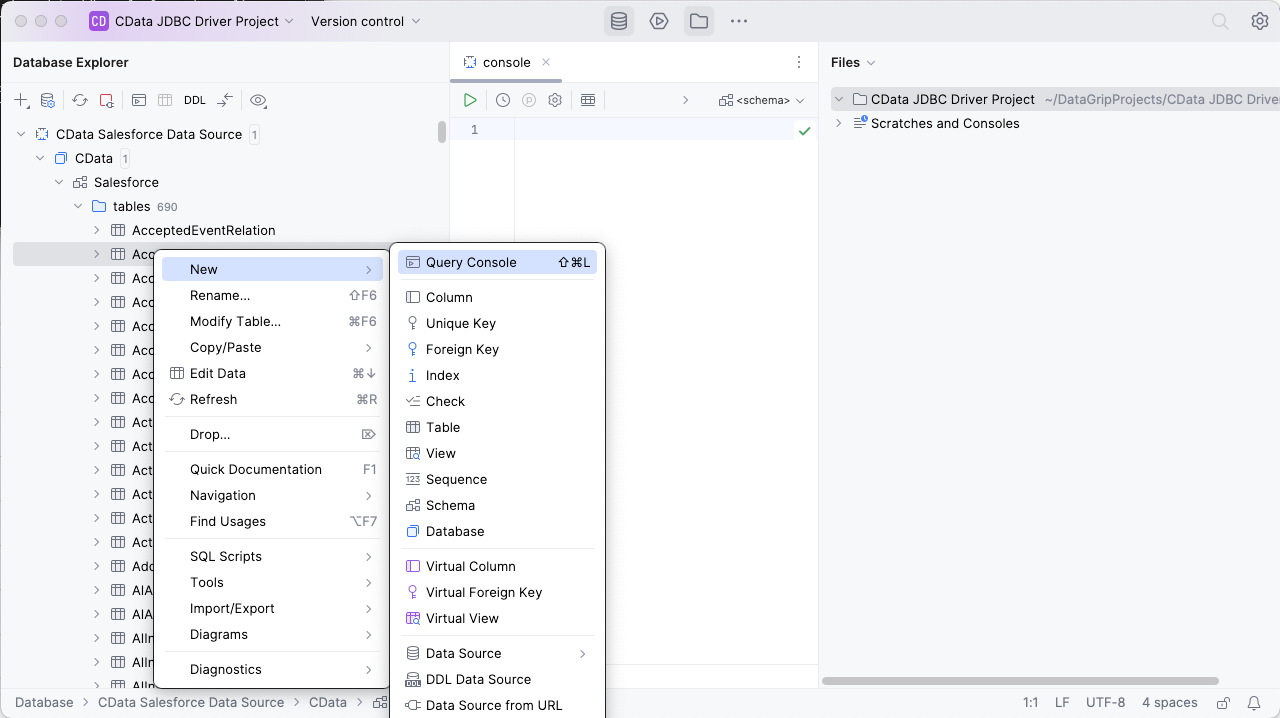
In the Console, write the SQL query you wish to execute. For example: SELECT Id, CandidateName FROM Candidate WHERE CandidateName = 'Jane Doe'

Download a free, 30-day trial of the CData JDBC Driver for Bullhorn CRM and start working with your live Bullhorn CRM data in DataGrip. Reach out to our Support Team if you have any questions.





